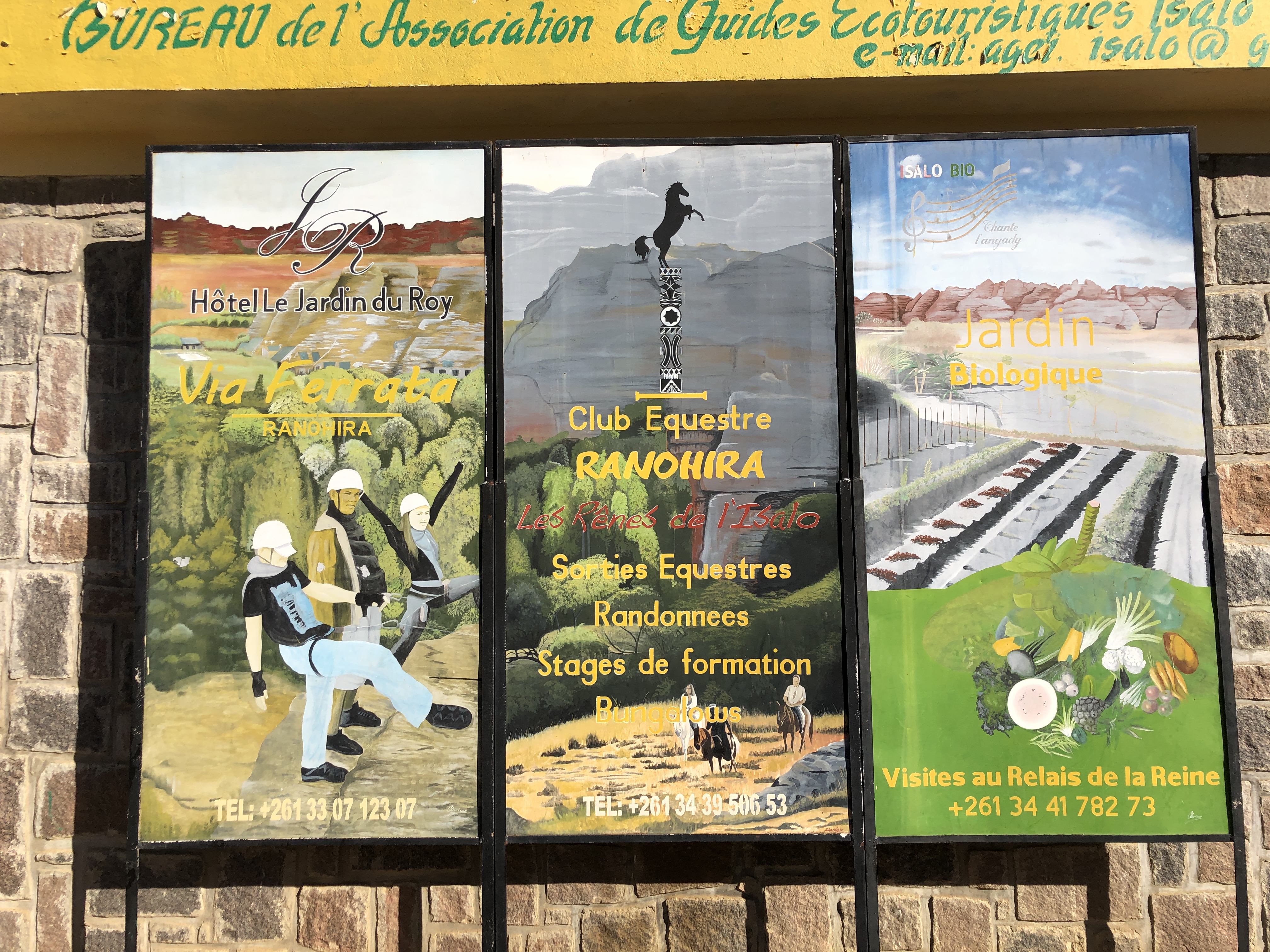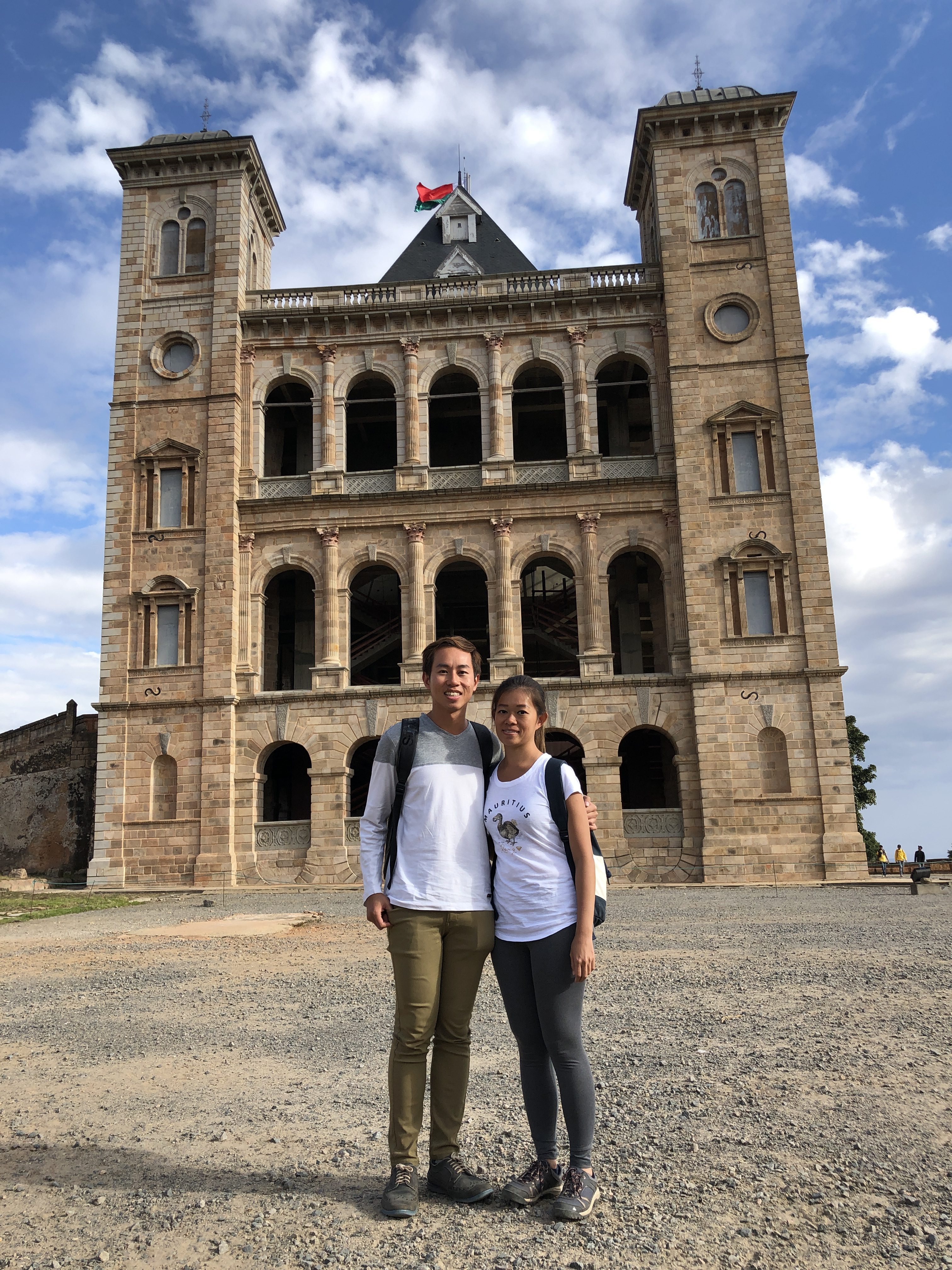
Morondava is a terminally laid-back seaside town with sandy streets and gently decaying clapboard houses. There is not much to do or see in the town itself, and most people come here on their way to/from Parc National des Tsingy de Bemaraha or Réserve Forestière de Kirindy. It’s also the starting point for the gruelling three-day, off-road 4WD adventure that connects western Madagascar to Tuléar in the country’s south. Closer-to-town attractions include the iconic Allée des Baobabs.

From Antsirabe, we endured an 8-hour drive to Morondava, on the western coast of Madagascar. Since we could not make it to the seaside town of Tulear, we made use of the opportunity to check out the beach at Morondava.

The beach located at the end of town is not the nicest place for swimming. There is a Bleu Soleil playground for children to entertain themselves. On the other side, there are fishermen who take their boats out to sea in the morning and in the afternoon, offer to ferry tourists to the other island for a quick buck. They offer to take us to see the mangroves and to relax on the private island. We saw the dirty beach conditions and decided against going there. Most of the beach was destroyed by the cyclone a few years ago.

However, our guide recommended us another beach – Kimony. It is owned by a private corporation and other than paying the village chief for parking, we were free to use the beach. There were some local families during our time there. We also bought one coconut from two local chaps to support their business.

Kimony Beach is a very deserted beach. There is just one small village nearby, but no shops or restaurants. Fishermen come and go in their pirogues, whilst their wifes and kids await their return in the shade of the few bushes along the beach.


The beach was not the main highlight of our time in Morondava. It was the Avenue of Baobabs which I had specially come here for. It is a 2km natural avenue, 3-square-kilometre area managed by the Malagasy organization Fanamby to protect more than three hundred of the species. The lofty baobabs can reach heights of more then 20m, towering above the mix of scattered bush and farmland that makes up the present-day landscape. Fifty years ago, indigenous dry forest was the natural vegetation here: nearly all of that has been cleared or burned, leaving the resilient baobabs like sentinels standing on the plain. Close-growing pairs of baobabs tend to wrap around each other, creating delightful baobabs amoureux, or “baobabs in love”.

The Avenue of Baobabs is most beautiful at sunrise or sunset. At sunrise, most vehicles on their way to the Tsingy de Bemaraha would stop and allow the tourists to take photos before they make the river crossing. For us, it was a gloomy morning, so we woke up early only to be disappointed by the sunrise (or lack of it). Our driver agreed to drive us there again to take nicer pictures at sunset.


I like how the Avenue of Baobabs is just a local road, with locals walking along it, transporting goods or walking along their zebus. As for the tourists, they would crowd along the avenue just to take the best shots, there were some tourists with drones which flew up and down the avenue to capture the best aerial view. It’s rare to have the place to yourself, especially in the evening when a crowd of several dozen visitors, local craft sellers and children is quite normal.


Unfortunately, with the growing popularity of the baobabs, some of the tree trunks have been vandalised by inconsiderate tourists. It is sad that people do not respect nature and want to leave their mark behind on this trees with a long history.

Another attraction around Morondava is Kirindy Private Reserve, a 120-square-kilometre tract of deciduous dry forest that is one of Madagascar’s truly outstanding natural areas – a fauna and flora hotspot that rivals the best in the country. It’s particularly popular for spotting nocturnal lemurs.

How to get to Morondava?
Air Madagascar operates daily flights from Antananarivo and other cities. The flight from Antananarivo to Morondava takes about one hour. Overland options include local taxi brousse or private car hire. Road work from Antananarivo to Morondava has been recently completed and driving time is much less than in the past. Drive time from the capital to Morondava ranges from 9 – 12 hours depending on the vehicle. From Antsirabe to Morondava takes approximately 7 hours.


